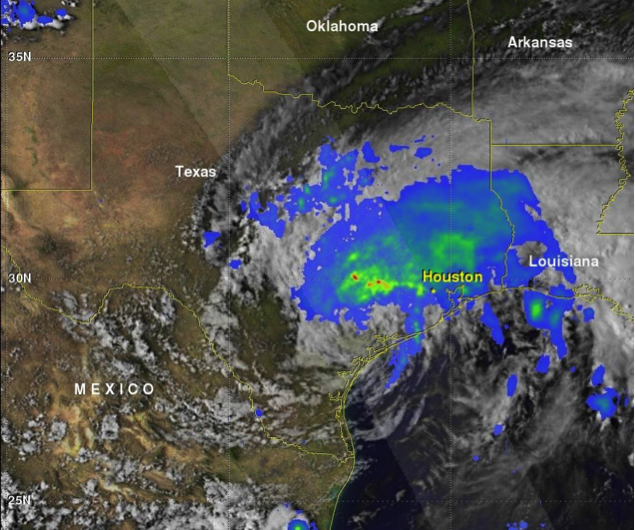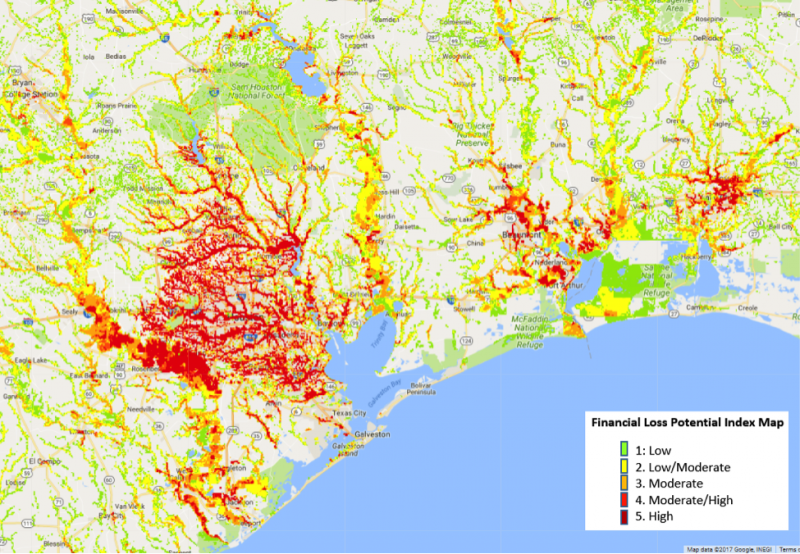Assessing Hurricane Harvey's financial loss potential

It's estimated that Hurricane Harvey dumped more than 30 trillion gallons of water across parts of the U.S. – most of it in east Texas and Louisiana.
The impacts of Harvey are still being assessed, but early estimates include more than 100,000 homes damaged or destroyed, with economic impacts of well over $100 billion.
The Financial Loss Potential Index represents the concentration of high flood hazard and/or high value property locations at a grid level, and can be used to validate loss estimates as well as review flood claims. The data is posted at 500-meter grid cells.
The property exposure data is derived from years of research with support from NASA's Applied Sciences program by integrating Earth-observing data and information on property attributes—as well as disaster forecasting and modeling parameters. The valuation data on U.S. residential, commercial, and industrial properties derived from NASA Earth-observing data offer a key parameter for exposure quantification and is applicable for disaster response, relief, as well as private insurance industry use.

Provided by NASA



















